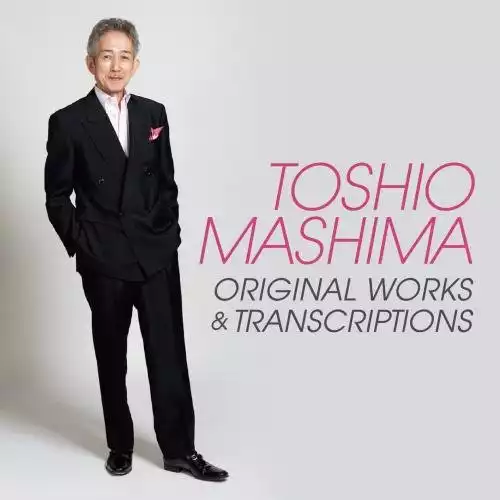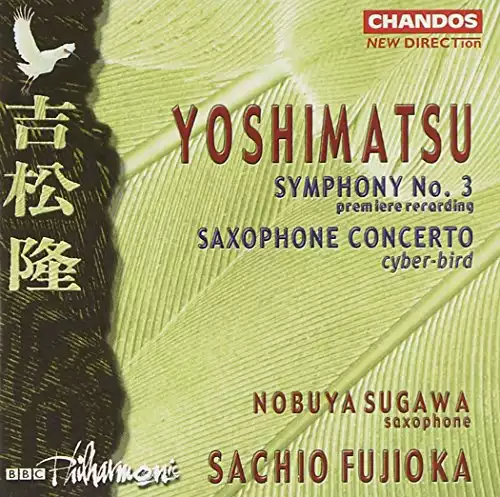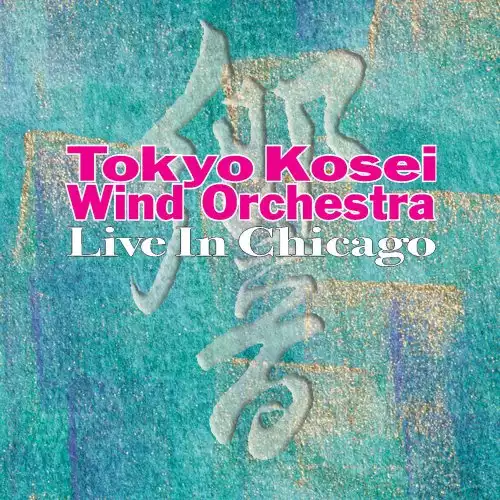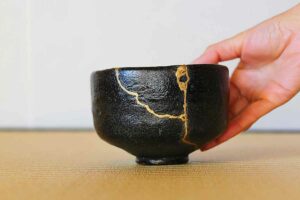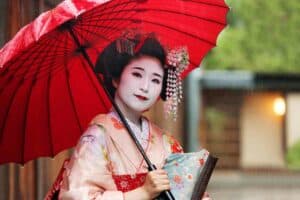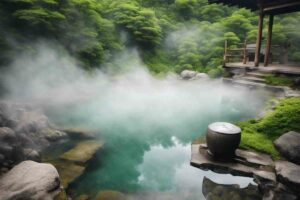The Japanese love music, so it’s no surprise that you will find diverse musical styles played by artists that have become world-famous.
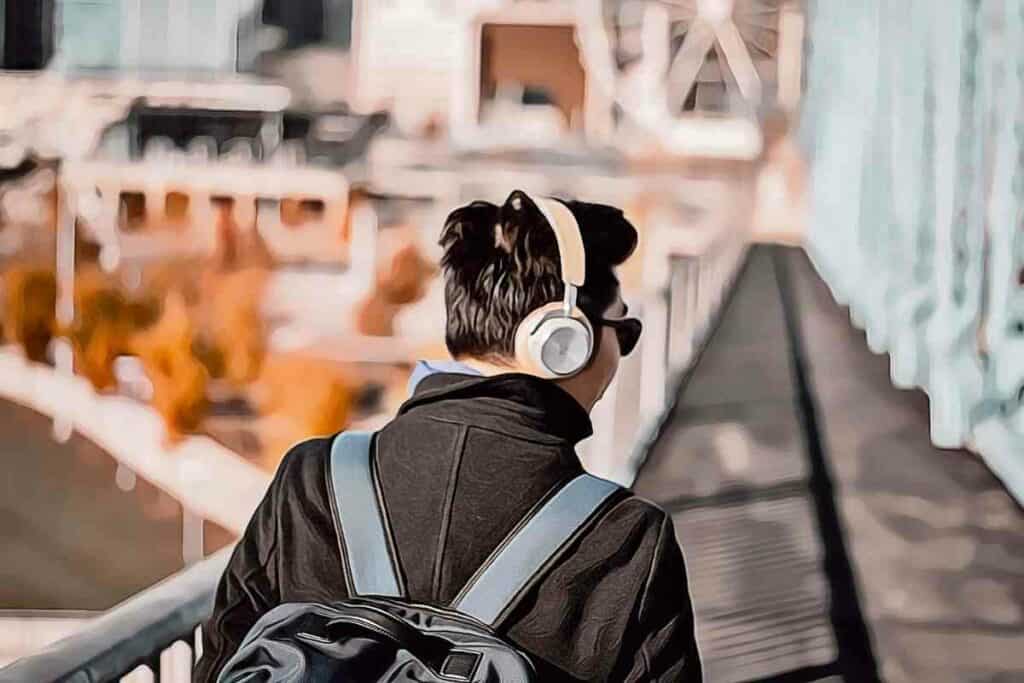
In this article, we share three of the best Japanese albums, with outstanding performances of classical and contemporary music that will lift your mood and enliven the senses – perfect for adding to your music collection!
Table of Contents
Best Japanese albums for the discerning listener
This selection of Japanese albums spans classic and modern Japanese music, composed and performed by some of Japan’s leading musicians.

In particular, they focus on wind and brass instruments, which are extremely popular in Japan.
Here are three must-listen Japanese albums along with sample tracks for you to enjoy.
Take a look – 9 Japanese String Instruments
1. TOSHIO MASHIMA Original Works & Transcriptions
You haven’t experienced Japanese music until you have heard one of their wind orchestras or symphonic wind bands.
Wind and brass instruments are extremely popular and played by schoolchildren, through to the nation’s finest military and civilian professional musicians.
The most beloved composer for wind musicians in Japan is undoubtedly the late Toshio Mashima (1949-2016).
He is one of Japan’s most prolific composers and arrangers with scores written for orchestras and bands, film, and television.
His music covers the full scope of creative expression in wind music, including:
- Marches
- Symphonic jazz
- Japanese-style melodies
- Brass band
- Original works
- Pop
This memorial album, recorded shortly after his death in 2016 brings together a definitive compilation of the very best of Mashima’s work spanning classical, jazz, and Japanese pop music.
This outstanding Japanese album also includes Mashima’s arrangements of classic Carpenters tracks and Chick Corea’s ‘Spain’.
About TOSHIO MASHIMA Original Works & Transcriptions
TOSHIO MASHIMA Original Works & Transcription is a project that commemorates Toshimo Mashima, a giant of wind music and brass bands in Japan.
Each of the 25 tracks has been carefully selected from Mashima’s original and arranged works.
| Title | Toshio Mashima Original Works & Transcriptions |
| Artist | The Japan Ground Self-Defense Force Central Band, Tokyo Kose Wind Orchestra Japan Air Self-Defense Force Central Band |
| Composer | Toshio Mashima |
| Running time | 145 minutes (2 discs) |
| Date of release | 21 Dec 2016 |
| Record Label | キングレコード |
| Jazz | JazzWind OrchestraMilitary band |
| Artist website | https://www.mod.go.jp/gsdf/central/english.html |
| Artist website | https://www.tkwo.jp/en/ |
This is an epic album for any lover of wind music as it displays the depth and scope of this popular type of Japanese music.
The 25 tracks are expertly performed by three of Japan’s premier wind ensembles, The Japanese Ground Self-Defense Force Central Band, Japan Air Self-Defense Force Central Band, and Tokyo Kosei Wind Orchestra.
The album includes some of Mashima’s most important and distinctively Japanese works.
In particular, ‘Les trois notes du Japon’, a piece written for the Tokyo Kosei Wind Orchestra explores Japanese melodic melodies, rhythm, and harmony to depict Japan in a new and vivid way. Folk melodies also feature in the Gotano Suite of Five Okinawan Folk Songs.
Mashima’s mastery of Japanese jazz is also inescapable.
The album includes classics like the ‘Mirage’ jazz suite and ‘Odyssey- to an eternal monument’ and the first recording of the composition Treasure Island.

You will be elated by these beautiful melodic tracks and exquisitely crafted arrangements, that display the beauty of the popular forms of Japanese contemporary music.
Mashima, a trombonist was definitely a musicians composer, and compositions like Sweet Breeze in May bring out the character and timbre of each instrument beautifully.
Performers deliver pristine solos and some of Japan’s finest percussionists garnish this recording with their energy and skills.
About the artist, Toshio Mashima (真島俊夫 )
Toshio Mashima was born in Yamagata Prefecture in 1949.
He originally intended to become an engineer but made the fateful decision to interrupt his studies by studying music, completing a music degree at Kanagawa University.
There, he studied music composition with Bin Kanade, jazz with Makoto Uchibora, and completed the Yamaha Band Director course.
Following university, Mashima spent the 1970 playing trombone for a variety of jazz and pop bands, moving to composition in the 1980s and 1990s.
His compositions were extremely successful with his band music sold across the world.
Mashima also wrote music for film and television and taught at the Yamaha Music School. His last position before his death from cancer was at the Institute of Education, Sobi.
TOSHIO MASHIMA Original Works & Transcriptions playlist
- Sweet Breeze in May – The Japan Ground Self-Defense Force Central Band 03:32
- Les trois notes du Japon – The Japan Ground Self-Defense Force Central Band 08:28
- La danse du phoenix impression de Kyoto – The Japan Ground Self-Defense Force Central Band 10:05
- Odyssey – To an Eternal Moment – The Japan Ground Self-Defense Force Central Band 09:46
- Straight Road – The Japan Ground Self-Defense Force Central Band 03:17
- Mirage a Paris – The Japan Ground Self-Defense Force Central Band 08:06
- Coral Blue – A Symphonic Impression for Band – The Japan Ground Self-Defense Force Central Band 04:41
- Suisougaku no Tame no Sanka Oinaru Nagare e – The Japan Ground Self-Defense Force Central Band 07:09
- Mirage 2 – The Japan Ground Self-Defense Force Central Band 06:20
- Deux Belles Ailes – The Japan Ground Self-Defense Force Central Band 08:11
- Bay Breeze – The Japan Ground Self-Defense Force Central Band 04:52
- Symphonic Poem SEASCAPE for Band – Tokyo Kosei Wind Orchestra 04:31
- Takarajima – Tokyo Kosei Wind Orchestra 04:00
- Carpenters Forever – Tokyo Kosei Wind Orchestra 06:13
- Dancing Funk – Tokyo Kosei Wind Orchestra 08:08
- Caravan – Japan Air Self-Defense Force Central Band 05:55
- The Days Of Wine And Roses – Japan Air Self-Defense Force Central Band 05:09
- Manha Da Carnaval – Japan Air Self-Defense Force Central Band 04:25
- Stardust – Japan Air Self-Defense Force Central Band 05:09
- Blusette – Japan Air Self-Defense Force Central Band 06:23
- Quintessence – Japan Air Self-Defense Force Central Band 04:29
- Baise Straight Ahead – Japan Air Self-Defense Force Central Band 03:26
- Day by Day – Japan Air Self-Defense Force Central Band 03:15
- Love theme from sunflower – The Japan Ground Self-Defense Force Central Band 03:38
- Spain – The Japan Ground Self-Defense Force Central Band 05:47
Must-listen track on TOSHIO MASHIMA Original Works & Transcriptions
One of the best tracks on this Japanese album is Mashima’s beautiful arrangement of Chick Corea’s ‘Spain’.
If you are a jazz lover and didn’t think that this famous track could get any better, Mashima has upgraded it with a film score-quality recording by The Japan Ground Self-Defense Force Central Band. Have a listen here.
2. Yoshimatsu: Symphony No. 3 / Saxophone Concerto with Nobuya Sugawa (soloist)
If you are looking for a Japanese classical music album, the dynamic composer Takashi Yoshimatsu continues to push boundaries as one of Japan’s leading contemporary classical composers.
As a Chandos recorder in residence, Yoshimatsu’s music has global reach and is performed by world-class musicians on this important recording.
This saxophone concerto played by famous Japanese saxophonist, Nobuya Sugawa delivers a mixture of tonalities with an enduring romantic heart, skillfully teased out by Sugawa’s masterful playing.
This recording includes elements of blues, jazz, and American minimalism.
About Yoshimatsu: Symphony No. 3 / Saxophone Concerto
This recording has been produced exclusively for Chandos as part of its modern, ‘New Directions’ series of recordings.
| Title | Symphony No. 3 / Saxophone Concerto |
| Artist | Nobuya Sugawa (soloist) BBC Philharmonic Orchestra |
| Composer | Takashi Yoshimatsu |
| Conductor | Sachio Fujioka |
| Running time | 68:15 |
| Year of release | 21 Dec 2016 |
| Record Label | Chandos |
| Genre | Classical |
| Artist website | http://yoshim.music.coocan.jp/ |
| Artist social media | www.instagram.com/nobuya_sugawa/ |
Yoshimatsu’s work is showcased beautifully with these ranging and eclectic scores that have the typical contemporary Japanese jazz and pop notes that will keep the unorthodox classical music listener happy.
Symphony No. 3
Yoshimatsu’s Third Symphony has been described by the composer as an ‘ode to Asia’.
It originally was composed as a five-movement piece but has been condensed into a conventional four-movement format for this recording.
Each movement settles on a specific melodic theme, which Yoshimatsu then plays with and presents in varied ways, with a call and response between classical and contemporary musical genres in the second movement.
The third movement has a decidedly darker tone and is capped by the bombastic melodic sunrise of the fourth.
Saxophone Concerto
Nobuya Sugawa reprises this triple concerto that Yoshimatsu composed for him back in the 1990s.
This ‘triple concerto’ played by a jazz trio that includes piano and percussion alongside the sax is inspired by birds, a common theme in Japanese contemporary music.
Sugawa moves masterfully through the ‘Bird in Colors’, ’Bird in Grief’, and ‘Bird in the Wind’ movements with the technical skill and creative and improvisational agility he is known for.
This piece almost slips into becoming jazz but remains classical in its scope and composition, especially the Bird in Grief, which is dedicated to the composer’s late sister.
About the solo, Nobuya Sugawa
Nobuya Sugawa is an eminent Japanese saxophonist who performs classical and contemporary music globally.
Born in 1961, Sugawa studied saxophone in his native Japan under Yuichi Omuro, at the Tokyo University of Arts, going on to establish himself as a leading classical saxophonist and performing with almost every orchestra in Japan.
Sugawa has received numerous accolades and awards, including:
- the Muramatsu Award
- the Idemitsu Music Award
- and the highest prizes in the 51st Music Competition of Japan.
He is also a TV and radio personality and his appearance in numerous commercials has further endeared him to the Japanese people.
Nobuya Sugawa tours frequently and plays more than 100 concerts each year, while regularly teaching saxophone masterclasses internationally.
Sugawa is also the concertmaster of the Tokyo Kosei Wind Orchestra, a position he has held for over two decades.
Yoshimatsu: Symphony No. 3 / Saxophone Concerto
Track 1. I. Birds in Colors: Allegro – Nobuya Sugawa
Track 2. II. Birds in Colors: Andante – Nobuya Sugawa
Track 3. III. Birds in Colors: Presto – Nobuya Sugawa
Track 4. I. Allegro: Adagio Grave – Allegro Molto – BBC Phil/Sachio Fujioka
Track 5. II. Scherzo: Allegro Scherzando – BBC Phil/Sachio Fujioka
Track 6. III. Adagio: Adagio – BBC Phil/Sachio Fujioka
Track 7. IV. Finale: Andante Sostenuto – Allegro – BBC Phil/Sachio Fujioka
Must-listen track on Yoshimatsu: Symphony No. 3 / Saxophone Concerto
The Saxophone Concerto, also known as The Cyberbird Concerto is an amazing listen with stand-out percussion bringing this orchestral work to life.
3. 2002 Midwest Clinic: Tokyo Kosei Wind Orchestra
Tokyo Kosei Wind Orchestra (東京佼成ウインドオーケストラ) also known as TKWO is one of the world’s best concert bands.
From their dedicated concert hall in Japan’s capital, they have established one of the world’s most expansive wind music repertoires, covering classical, brass band, big band, pop, and jazz music from the world’s leading composers.
This rare Japanese album is a recording of performances as part of an international musical performance clinic held in Chicago, during one of their overseas tours.
About 2002 Midwest Clinic: Tokyo Kosei Wind Orchestra
This is an extremely high-quality recording of the TKWO using some of the US and Japan’s most advanced recording gear.
It was recorded and mastered by Master Engineer Yoshihiko Mazda with a sampling frequency of over 1 million bytes per second, so though the disc looks unassuming, the sound quality will blow you away.
| Title | 2002 Midwest Clinic: Tokyo Kosei Wind Orchestra |
| Artist | Tokyo Kosei Wind Orchestra |
| Composer | Various |
| Producer(s) | Yoshihiko Mazda |
| Year of release | 2002 |
| Record Label | Mark Masters/Capri Records |
| Genre | Classical |
| Artist website | www.tkwo.jp/en/ |
The orchestra is conducted by the British conductor Douglas Bostock who took over the orchestra from its legendary conductor and music director Frederick Fennell.
Soloist Nobuya Sugawa and other fine musicians flawlessly execute classical pieces that include standards for wind orchestra like Masque for Symphonic Wind Band and Frederick Fennell’s masterful arrangement of Percy Graingers’ Ye Banks and Braes O’ Bonnie Doon.
About the artist, Tokyo Kosei Wind Orchestra
The Tokyo Kosei Wind Orchestra was founded as the Tokyo Kosei Symphonic Band in 1960.
It was a worship group for a religious organization called Rissho Kosei Kai, with members being adherents of the religion, however, its popularity and membership increased and the band soon became secularized.
The establishment and international profile of the orchestra were accomplished through the involvement of the legendary American conductor, Frederick Fennel.

He had founded the Eastman Wind Ensemble in the States but conducted the Tokyo Kosei Wind Orchestra on a guest basis throughout the 1970s.
Fennell turned his attention to the orchestra because of its caliber and potential.
He became a permanent instructor in the 1980s, broadening the repertoire of the orchestra and increasing recordings and performances.
Fennel remained the Music Director of Tokyo Kosei until 2000, and after he died in 2004 he was honored as Conductor Laureate.
The orchestra performs and records at the custom-built concert Fumon-kan Hall on the Rissho Kosei-kai campus. It continues to be financed by the Rissho Kosei-kai religion.
2002 Midwest Clinic: Tokyo Kosei Wind Orchestra playlist
- Masque for Symphonic Wind Band: Kenneth Hesketh
- Fantasy Variation for Euphonium and Band: Yasuhide Ito
- Symphonies of Gaia for Symphonic Wind Ensemble: Jayce John Ogren
- I. Andante et allegro
- II. Final
- I. Prologue
- II. Song
- III. Dance
- IV. Burlesque
- V. Soliloquy
- VI. March
- Harrison’s Dream: Peter Graham
- Ye Banks and Braes O’ Bonnie Doon: Percy A. Grainger
- His Honor: Henry Fillmore/ed. Frederick Fennell
Must-listen track on 2002 Midwest Clinic: Tokyo Kosei Wind Orchestra
This is an album for wind band lovers who really appreciate expertly performed symphonic music.
This classic marching band track, His Honor by Henry Fillmore is edited and arranged for the orchestra by bandmaster Frederick Fennell:
Best Japanese Albums FAQs

What is the most popular type of music in Japan?
The most popular musical genre in Japan is J-Pop, followed by rock and dance music according to over 80% of respondents to a Statista survey in 2020. Other popular forms of music include jazz, classical music, and K-Pop, with traditional Japanese music like Enka and Kayokyoku being the least popular.
Who is Japan’s leading music artist?
Singer/songwriter Ayumi Hamasaki (浜崎あゆみ) is Japan’s biggest music artist. She is often called the Empress of J-Pop because of her popularity throughout Japan and Asia. She is Japan’s best-selling solo artist and has sold over 60 million records during her career.
How big is the Japanese music industry?
Japan has one of the world’s largest music industries with CDs, MP3s, and streamed music being a 283 billion Yen ($2.1 billion) industry. Interestingly, CDs are still an extremely popular music format in Japan.
In Conclusion
Japan has great music spanning all the major genres. These Japanese albums show just how varied Japanese music is and the remarkable talent and excellence of Japan’s musicians and composers.
- Japanese Wedding Traditions (Venue, Dress & Food)
- Kintsugi: Perfectly Imperfect Ceramic Art (with 8 Examples)
- 5 Best Japanese Makeup Brushes for a Flawless Finish
- Maiko Vs Geisha Compared: What Are the Differences?
- Japanese String Instruments (9 Famous Ones)
- Best Onsen Destinations In Japan (10 Top Locations)

